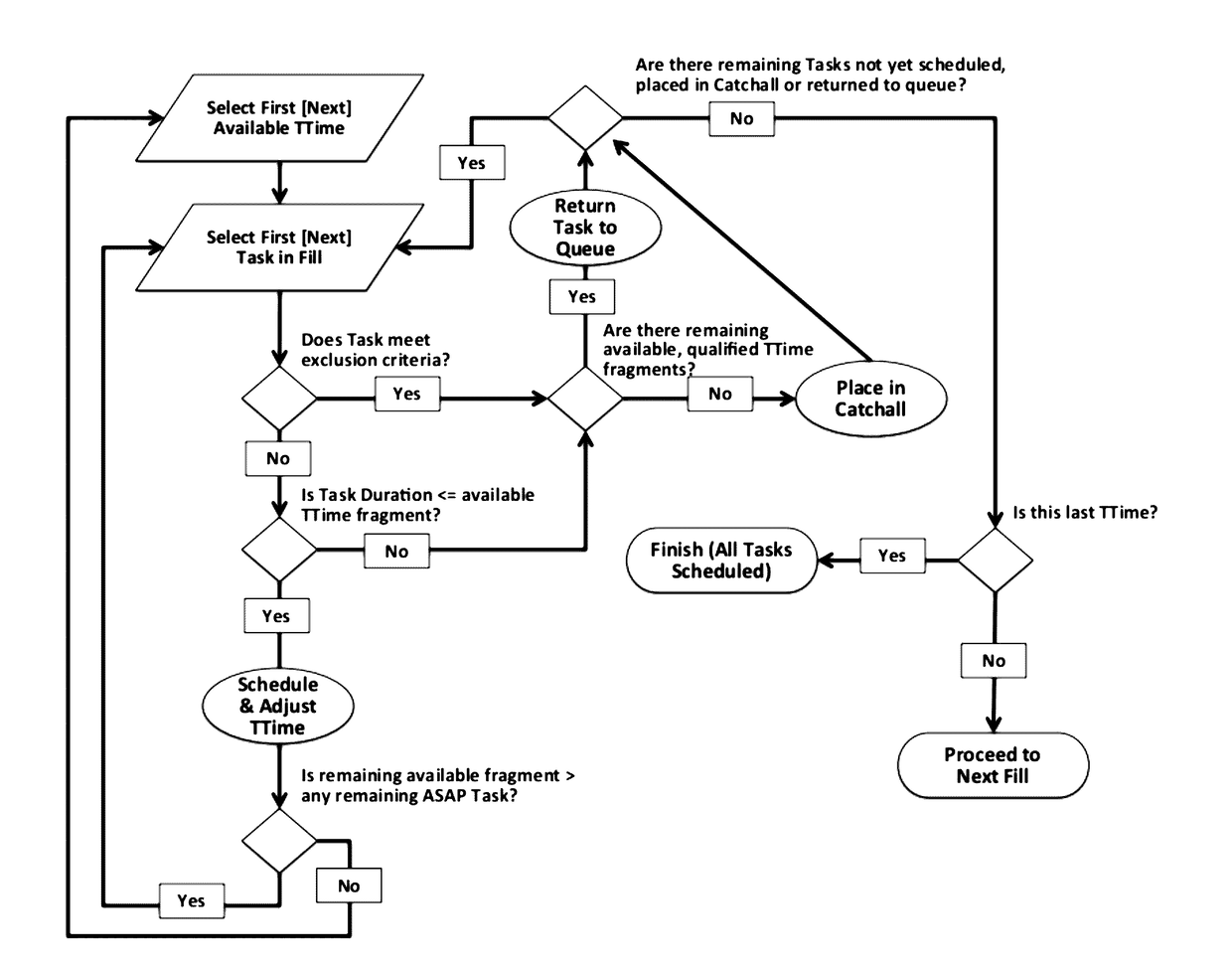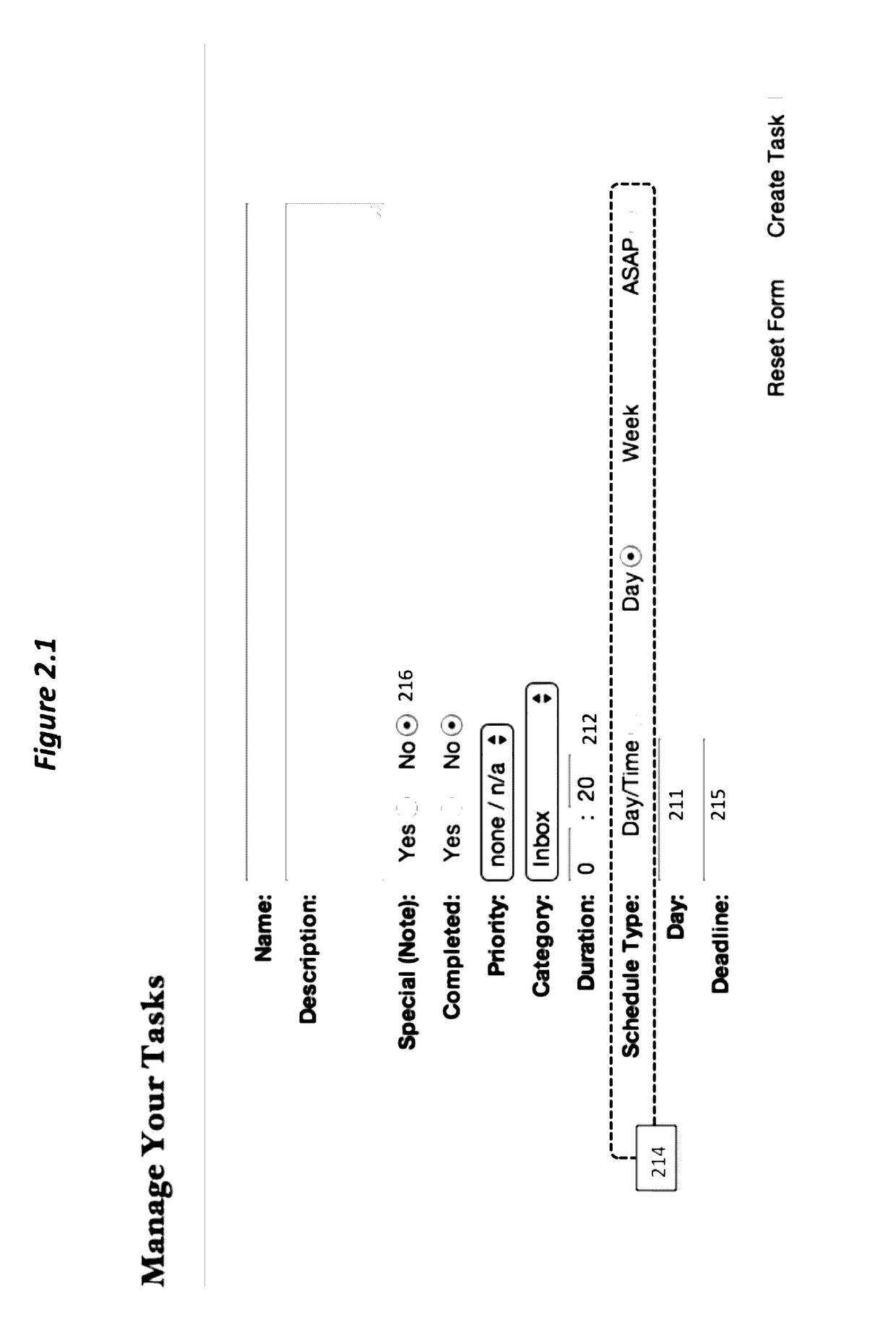Calendar based task and time management systems and methods
a task and time management system technology, applied in the field of electronic scheduling and managing time and tasks, can solve the problems of unmanageable task lists, low efficiency, and inability to monitor relationships, and achieve the effects of improving management, prioritization, scheduling and tracking
- Summary
- Abstract
- Description
- Claims
- Application Information
AI Technical Summary
Benefits of technology
Problems solved by technology
Method used
Image
Examples
Embodiment Construction
[0047]For the purposes of this description, “handling rules” are if-then statements employing at least one of Task attributes, TTime attributes, and exogenous factors (such as time of day, location or even weather), and taking the form “if ——————, then do ——————, else ——————.” Handling rules are stored as records in the CBTM database for later retrieval and use, and have their own unique attributes that describe how they are to be used. For instance rules can be designated as “stop here” or continue, such that the rule becomes “if ——————, then do —————— then do not apply the next handling rule.” Handling rules can be triggered by other handling rules, for example stating “if —————— then if —————— do ——————, else ——————.” Sequences of handling rules can be saved and retrieved as single compilations.
[0048]In addition to specifying how a Task should be scheduled or what lists it should be added to, handling rules can be used to define conditions under which a Task should be modified an...
PUM
 Login to View More
Login to View More Abstract
Description
Claims
Application Information
 Login to View More
Login to View More - R&D
- Intellectual Property
- Life Sciences
- Materials
- Tech Scout
- Unparalleled Data Quality
- Higher Quality Content
- 60% Fewer Hallucinations
Browse by: Latest US Patents, China's latest patents, Technical Efficacy Thesaurus, Application Domain, Technology Topic, Popular Technical Reports.
© 2025 PatSnap. All rights reserved.Legal|Privacy policy|Modern Slavery Act Transparency Statement|Sitemap|About US| Contact US: help@patsnap.com



